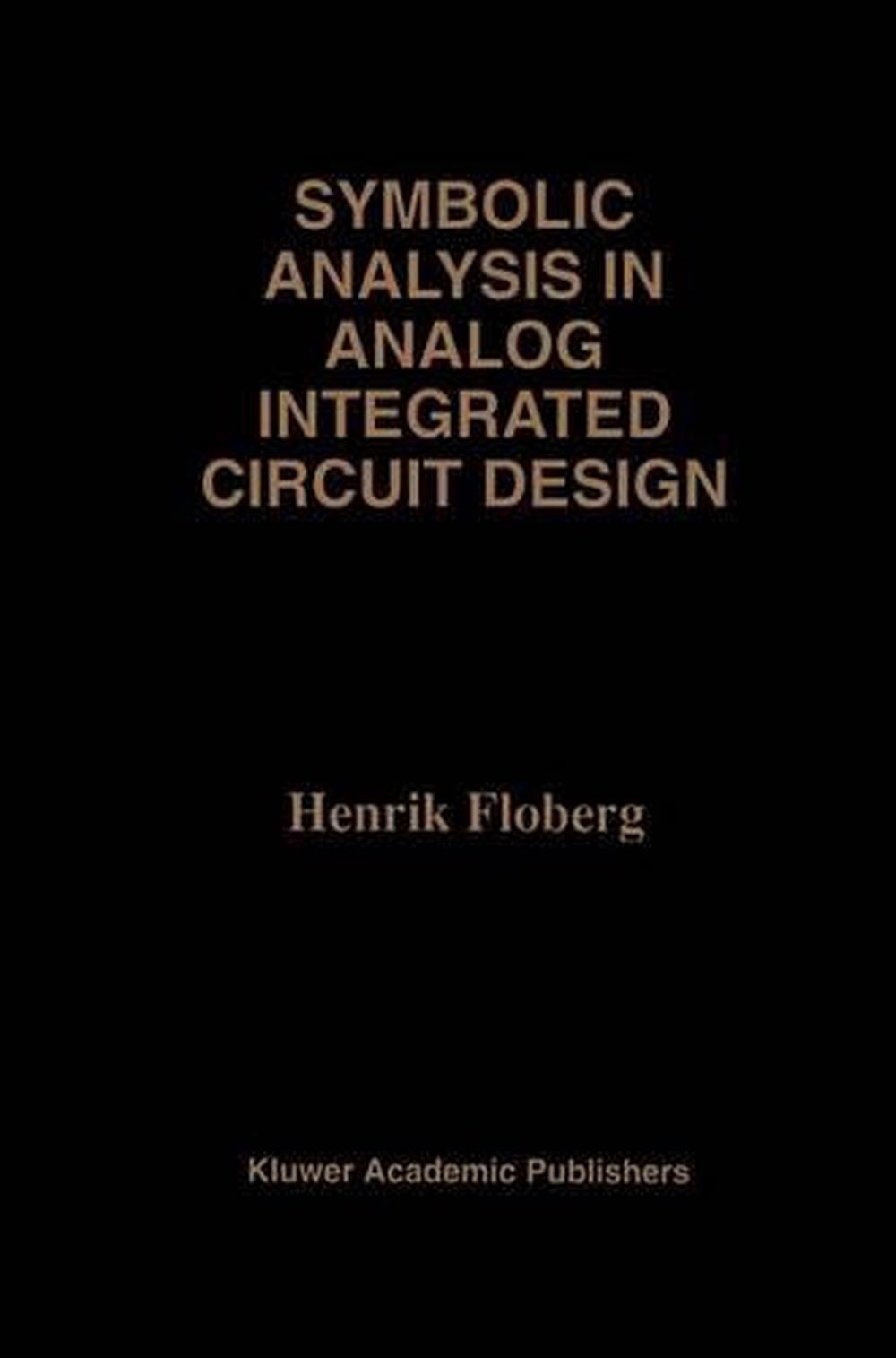
Symbolic Analysis in Analog Integrated Circuit Design
by Henrik Floberg
Symbolic Analysis in Analog Integrated Circuit Design provides an introduction to computer-aided circuit analysis and presents systematic methods for solving linear (i.e.
Hardcover
English
Brand New
Publisher Description
This text provides an introduction to computer-aided circuit analysis and presents systematic methods for solving linear (i.e. small-signal) and nonlinear circuit problems, which are illustrated by a number of examples. Computer-aided symbolic circuit analysis is useful in analogue integrated circuit design. Analytic expressions for the network transfer functions contain information that is not provided by a numerical simulation result. However, these expressions are generally extremely long and difficult to interpret; therefore, it is necessary to be able to approximate them guided by the magnitude of the individual circuit parameters. Engineering has been described as "the art of making approximations". The inclusion of symbolic analysis in analogue circuit design reduces the implied risk of ambiguity during the approximation process. A systematic method based on the nullor concept is used to obtain the basic feedback transistor amplifier configurations. Approximate expressions for the locations of poles and zeros for linear networks are obtained using the extended pole-splitting technique.An unusual feature of the book is the consistent use of the transadmittance element with finite (linear or nonlinear) or infinite (i.e. nullor) gain as the only requisite circuit element. The describing function method is used to obtain approximate symbolic expressions for the harmonic distortion generated by a soft or hard transconductance nonlinearity embedded in an arbitrary linear network. The design and implementation of a program (i.e. CASCA) for symbolic analysis of time-continuous networks is described. The algorithms can also be used to solve other linear problems, for example, the analysis of time-discrete switched-capacitor networks.
Table of Contents
1 Introduction.- 1.1 Symbolic Analysis.- 1.2 Motivation.- 1.3 Book Outline.- 2 Network Theory.- 2.1 Transmission function.- 2.2 Poles and Zeros.- 2.3 Nodes and Ports.- 2.4 Network Elements.- 3 Symbolic Analysis.- 3.1 Circuit Equations.- 3.2 Symbolic Methods.- 3.3 Admittance Matrix.- 3.4 Network Functions.- 3.5 Approximation Methods.- 4 Extended Pole-Splitting.- 4.1 Numerical Roots.- 4.2 Approximate Symbolic Roots.- 4.3 Two-Stage Operational Amplifier.- 4.4 Single-Stage Operational Amplifier.- 5 Compacted Nodal Analysis.- 5.1 Transadmittances.- 5.2 Nullor.- 5.3 Network Functions Using CNA.- 5.4 Block Diagram Elements.- 6 Nullor Synthesis.- 6.1 Two-Port Network.- 6.2 Basic Negative-Feedback Configurations.- 6.3 Nullor Element.- 6.4 Nonideal Transistor.- 6.5 Transistor Implementations of the Nullor.- 6.6 Transistor Amplifiers.- 6.7 Alternative Transistor Amplifiers.- 7 Transistor Models.- 7.1 Network Elements.- 7.2 Nodal Formulation.- 7.3 Nullor.- 7.4 Small-Signal Transistor Models.- 7.5 Approximate Symbolic Expressions.- 8 Symbolic Distortion Analysis.- 8.1 Nonlinear Active Networks.- 8.2 Describing Functions.- 8.3 Examples.- 9 Switched-Capacitor Networks.- 9.1 Switched Capacitor.- 9.2 Equivalent Analog Circuit.- 9.3 Switches and Operational Amplifiers.- 9.4 Switched-Capacitor Amplifier.- 9.5 Switched-Capacitor Biquad.- 10 CASCA.- 10.1 Language.- 10.2 Circuit Description.- 10.3 Graphics.- 11 Conclusions.- A Determinants.- A.1 Definition.- A.2 Minors and Cofactors.- A.3 Cramer's Rule.- B Cubic Polynomial Equation.- C Describing Function Method.- C.1 Variable Notation.- C.2 Numerical Values.- D CASCA Examples.- D.1 Active RC-Filter.- D.2 Two-Stage Operational Amplifier.- D.3 SC-Biquad.
Promotional
Springer Book Archives
Long Description
Symbolic Analysis in Analog Integrated Circuit Design provides an introduction to computer-aided circuit analysis and presents systematic methods for solving linear (i.e. small-signal) and nonlinear circuit problems, which are illustrated by concrete examples. Computer-aided symbolic circuit analysis is useful in analog integrated circuit design. Analytic expressions for the network transfer functions contain information that is not provided by a numerical simulation result. However, these expressions are generally extremely long and difficult to interpret; therefore, it is necessary to be able to approximate them guided by the magnitude of the individual circuit parameters. Engineering has been described as 'the art of making approximations'. The inclusion of symbolic analysis in analog circuit design reduces the implied risk of ambiguity during the approximation process. A systematic method based on the nullor concept is used to obtain the basic feedback transistor amplifier configurations. Approximate expressions for the locations of poles and zeros for linear networks are obtained using the extended pole-splitting technique. An unusual feature in Symbolic Analysis in Analog Integrated Circuit Design is the consistent use of the transadmittance element with finite (linear or nonlinear) or infinite (i.e. nullor) gain as the only requisite circuit element. The describing function method is used to obtain approximate symbolic expressions for the harmonic distortion generated by a soft or hard transconductance nonlinearity embedded in an arbitrary linear network. The design and implementation of a program (i.e. CASCA) for symbolic analysis of time-continuous networks is described. The algorithms can also be used to solve other linear problems, e.g. the analysis of time-discrete switched-capacitor networks. Symbolic Analysis in Analog Integrated Circuit Design serves as an excellent resource for students and researchers as well as for industry designers who want to familiarize themselves with circuit analysis. This book may also be used for advanced courses on the subject.
Details

